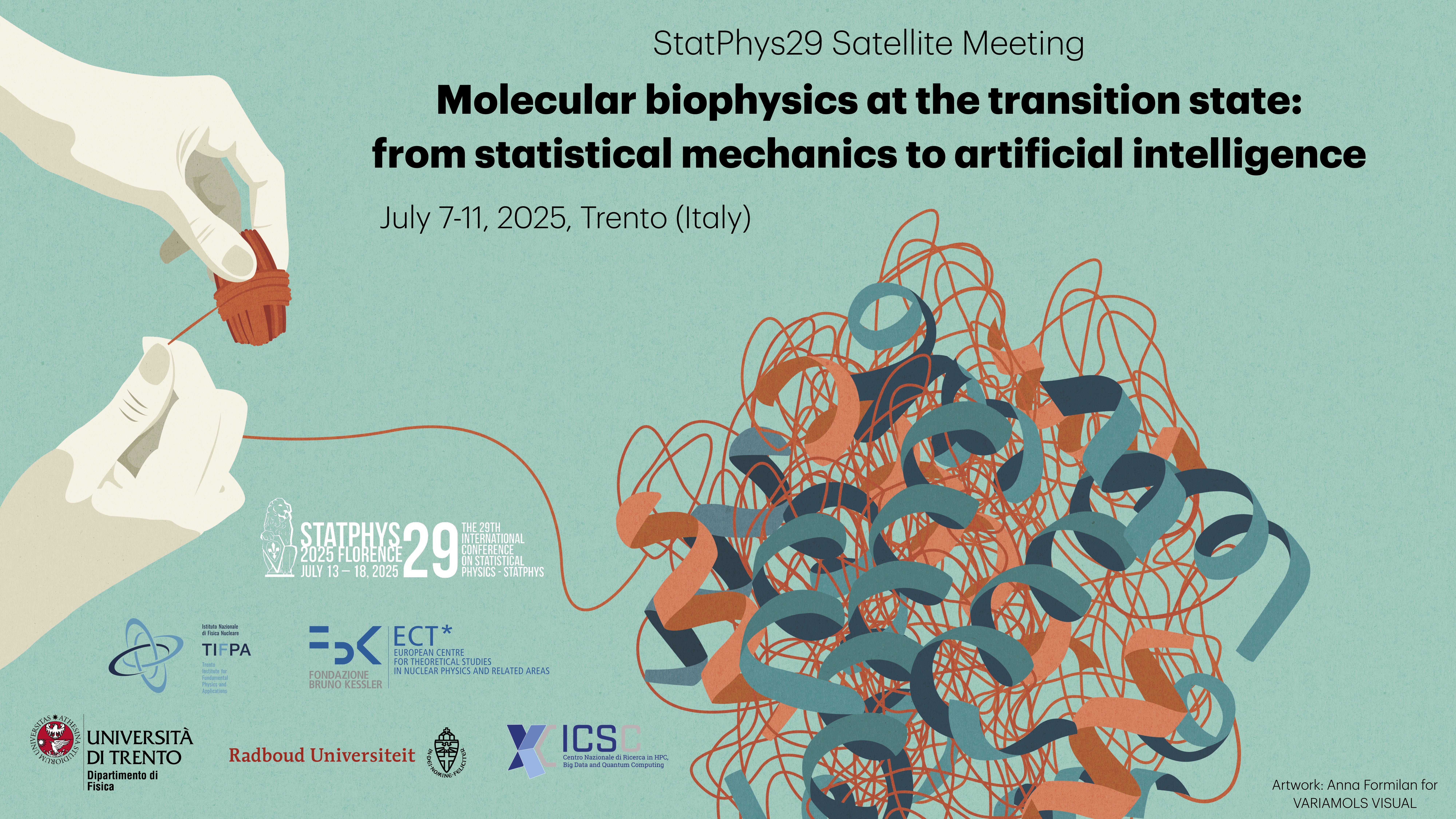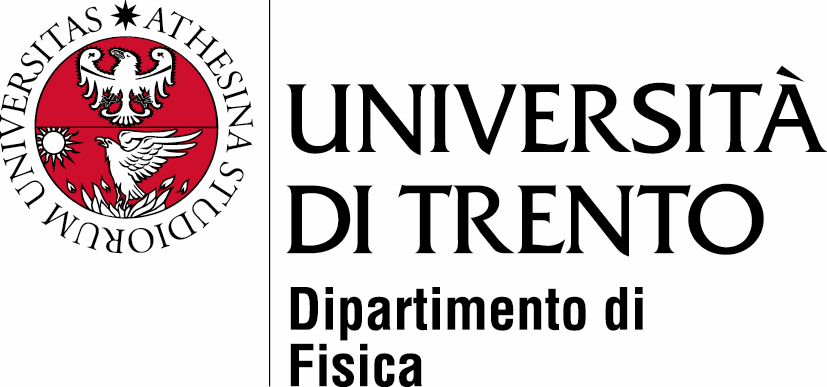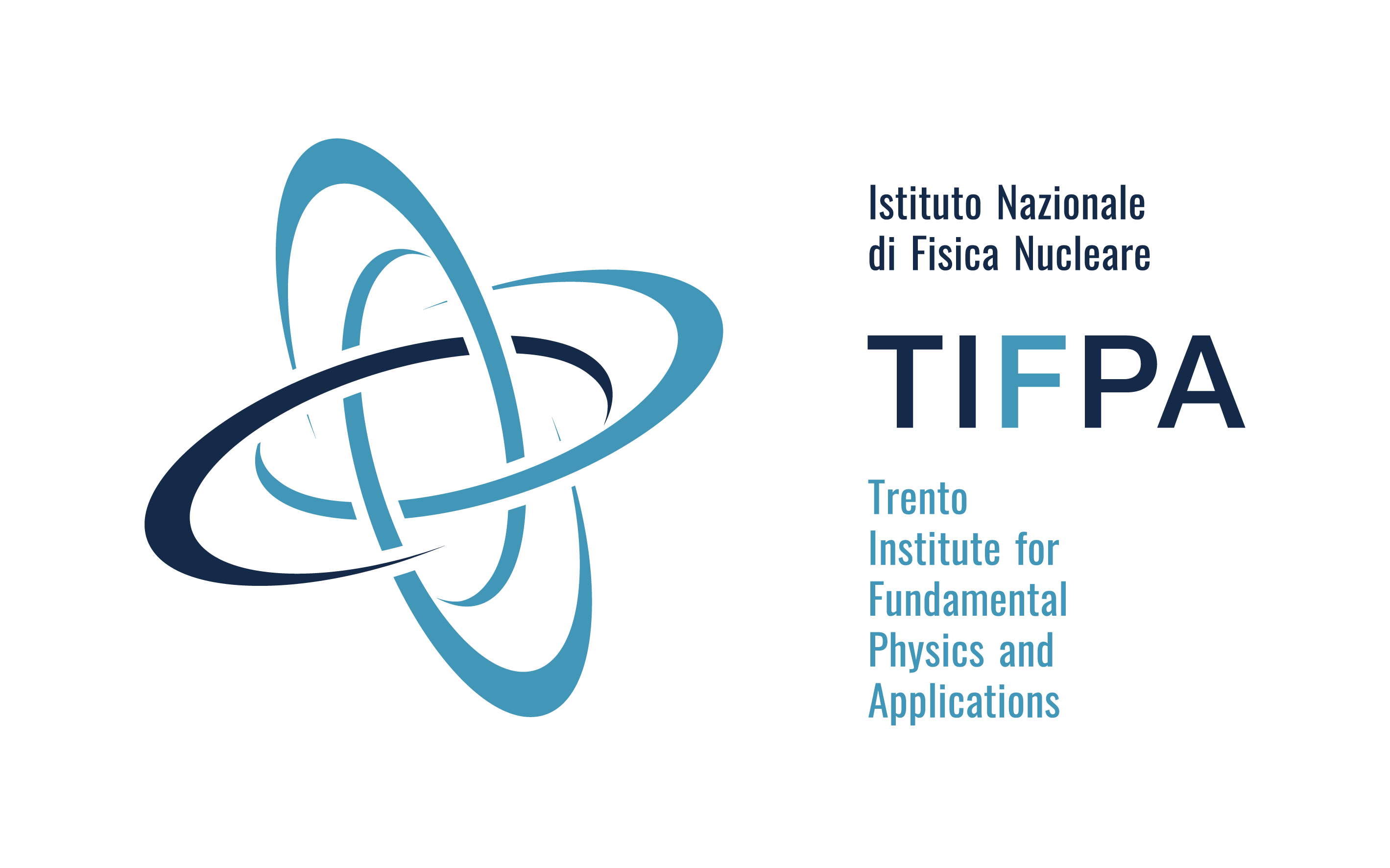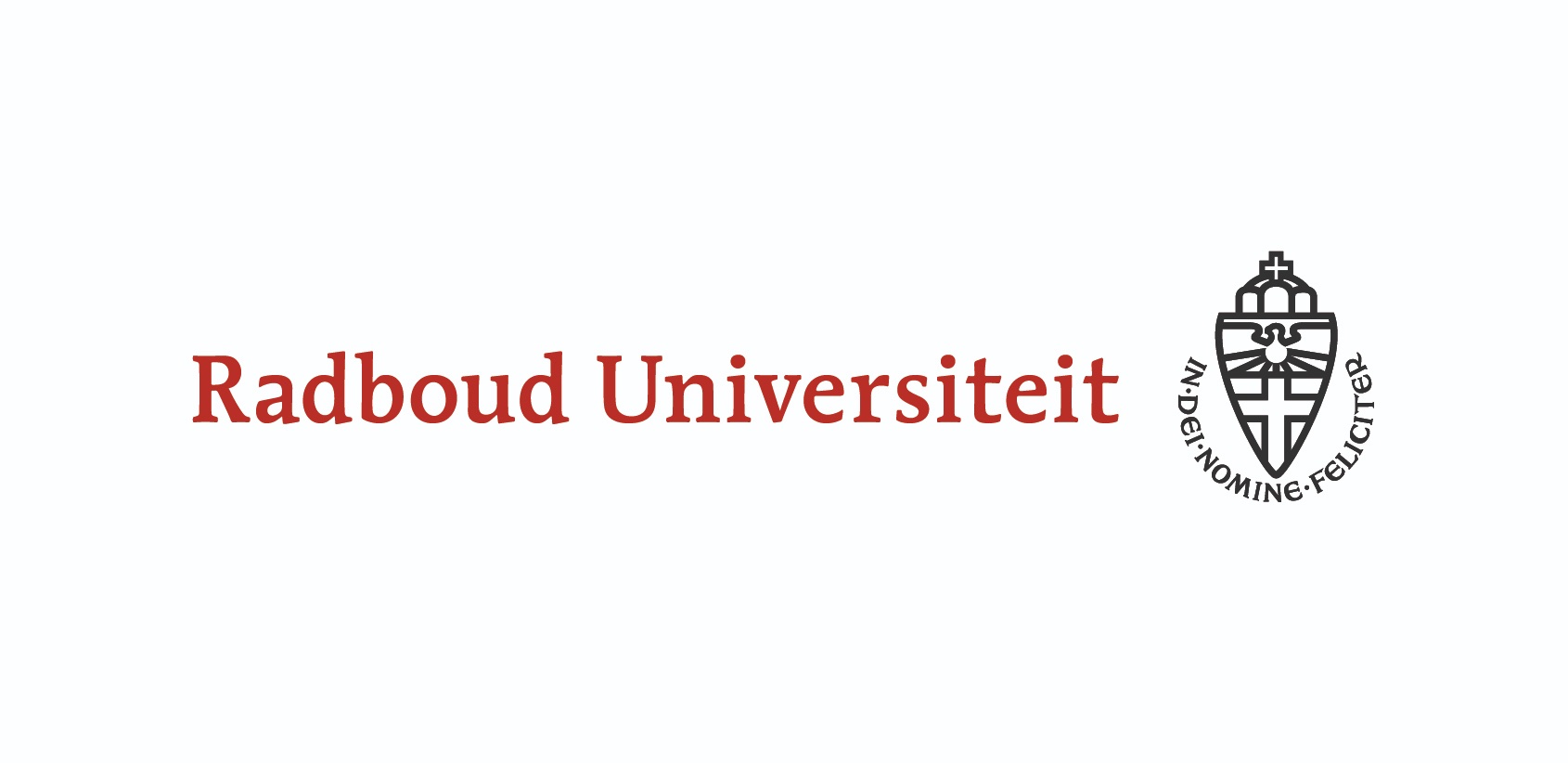Molecular biophysics at the transition state: From statistical mechanics to AI
Palazzo Consolati - University of Trento

Welcome to the Trento edition of the StatPhys29 satellite workshops! As the title suggest, the event will gather young researchers and leading experts in the fields of computational biophysics, statistical mechanics and machine learning, to discuss the challenges and crossroads that stand before biomolecular simulations in the machine learning era.
Here (and in the dedicated sections of the website) you’ll find all relevant information on the workshop and the venue - yet, feel free to contact us anytime at biomol.ai_ws.phys@unitn.it.
Posters and oral contributions will be admitted upon evaluation and acceptance, and participation in the event will be totally free of charge. We look forward to seeing you in Trento!
CALL FOR ABSTRACT DEADLINE EXTENDED - New deadline: May 25th 2025
Purpose of the workshop
Confirmed Invited Speakers
-
Paolo Carloni (Forschungszentrum Jülich, Germany)
-
Michele Cascella (University of Oslo, Norway)
-
Oleksandra Kukharenko (Max Planck Institute for Polymer Research, Germany)
-
Rémi Monasson (CNRS & Ecole Normale Supérieure, France)
-
Agnes Noy (University of York, United Kingdom)
- Elena Papaleo (Technical University of Denmark, Denmark)
- Jan Schuemann (Massachusetts General Hospital & Harvard Medical School, USA)
- Giuseppe Jurman (Fondazione Bruno Kessler & Humanitas University)
Important dates and information
-
Registration and abstract submission opening: February 15th 2025
- (New) Abstract submission deadline: May 25th 2025
- Registration deadline: May 30th 2025
- To apply for an Oral or Poster contribution, please refer to the Call for Abstracts section of the website and fill in the associated form.
- To register for the workshop, please refer to the Registration section of the website and fill in the associated form.
- Please note that both abstract submission and registration for the event require you to have or create an Indico account. Should you need support, do not hesitate to contact us or the ECT* staff.
Social events
Two social events are foreseen during the workshop, namely:
-
A welcome networking aperitivo + food (Monday, July 7th, 18:30), which will be hosted by La Bookique. Expenses for this event will be covered by the organization.
-
The social dinner (Wednesday, July 9th, 20:00), which will take place at Trattoria Piedicastello. Please note that expenses for this event (about 30 €) will be covered by the participants.
Co-organizing Institutions
Sponsors



.jpg)
